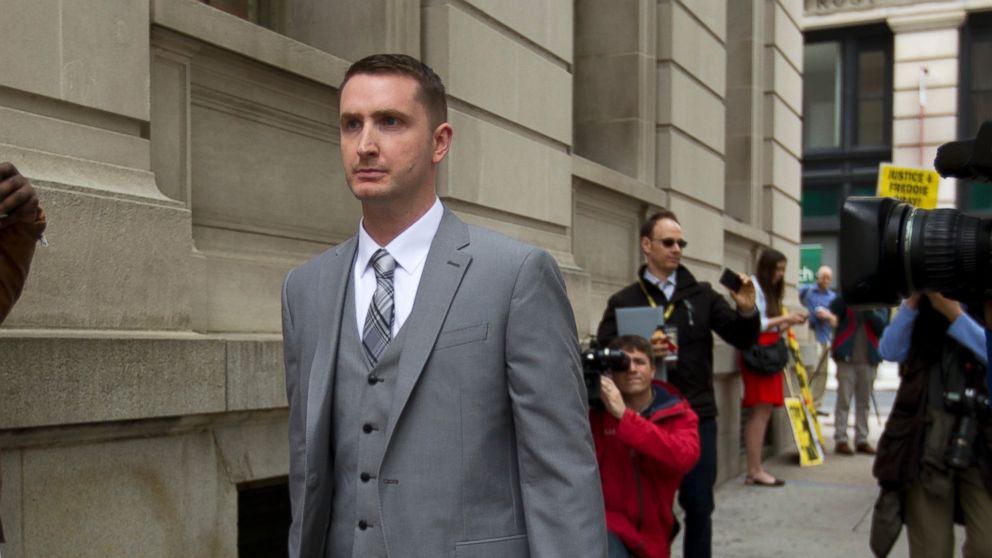Prosecutors Say Baltimore Police Officer Edward Nero Did Not Follow Protocols With Freddie Gray
— -- A failure to follow basic police protocols, including the fastening of a seat belt, led to the death of Freddie Gray, prosecutors said today during the first day of Baltimore police officer Edward Nero’s trial. Nero, 30, is the second of six Baltimore officers to stand trial for the death of Gray, who died in April 2015 while in police custody. Gray broke his neck while riding unsecured in the back of a police van. Gray’s death ignited days of protests and riots in Baltimore, helping to fuel the national Black Lives Matter movement.
Nero, who is white, is charged with assault, reckless endangerment and misconduct in office for his involvement in Gray's arrest and injury that later led to his death. His trial is expected to last five days. Nero has pleaded not guilty.
Nero opted for a bench trial rather than a jury trial, meaning that the judge will hear arguments from both sides before ruling on a verdict. A jury is not present in a bench trial, therefore limiting the possibility of a mistrial. Legal experts believe Nero is seeking a verdict based strictly on the merits of the law and not an emotional interpretation of it.
Prosecutors are trying to portray Nero as someone who actively disregarded protocol.
“Police procedure does not allow what these officers did,” said prosecutor Michael Schatzow, claiming that Nero was well-versed in seat belt rules and prisoner transportation practice before he placed Gray into the back of a police van without a seat belt on.
Nero’s defense said he did his job to the best of his abilities and that “everything was done correctly.”
“Guys like him are running into buildings saving lives,” said Marc Zayon, his defense attorney, calling Gray’s death an “unfortunate incident.”
“It is impossible for an officer to seat belt somebody who does not want to be shackled,” Zayon argued. He maintained that Nero did not take the extra precaution in securing Gray in the van because he was concerned for his own safety.
“The police officers were outnumbered...people were being threatening and closing in...the situation was getting aggressive,” Zayon said.
But the state disagrees. Nero “deprived Mr. Gray of his liberty” by failing to follow protocol, Schatzow said, asking the judge to return guilty verdicts. “The issue, your honor, is not one of danger. The issue is that of not caring.”
Opening statements for the state and defense lasted about 20 minutes each before prosecutors began calling witnesses.
Lloyd Sobboh, a Baltimore police officer, testified that in May 2015 he participated in a video demonstration for the police department while he was a cadet, showcasing how easy it is to move about the police van even while in leg shackles and handcuffs. Sobboh – about the same build as Gray – was placed on the floor of the police van and said it was an “uncomfortable” experience. The court played a video that showed Sobboh, while restrained, was able to lift himself into a seated position, kick the police doors and shake the van back and forth within minutes.
The state’s main objective from showing this video in court: without a seat belt, prisoners are free to move about and can easily injure themselves when the police van is in motion.




